House Un-American Activities Committee
The House Committee on Un-American Activities (HCUA), popularly dubbed the House Un-American Activities Committee (HUAC), and from 1969 onwards known as the House Committee on Internal Security, was an investigative committee of the United States House of Representatives. The HUAC was created in 1938 to investigate alleged disloyalty and subversive activities on the part of private citizens, public employees, and those organizations suspected of having Fascist or Communist ties. When the House abolished the committee in 1975,[1] its functions were transferred to the House Judiciary Committee.
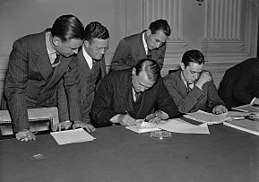
| This article is part of a series on the |
| United States House of Representatives |
|---|
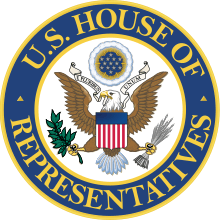 Great Seal of the United States House of Representatives |
|
History of the United States House of Representatives |
| Members |
|
|
| Politics and procedure |
|
| Places |
The committee's anti-communist investigations are often compared to (and confused with) those of Joseph McCarthy[2] who, as a U.S. Senator, had no direct involvement with the House committee.[3] McCarthy was the chairman of the Government Operations Committee and its Permanent Subcommittee on Investigations of the U.S. Senate, not the House.
History
Precursors to the committee
Overman Committee (1918)
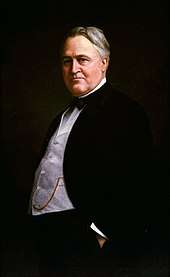
The Overman Committee was a subcommittee of the committee on the Judiciary chaired by North Carolina Democratic Senator Lee Slater Overman that operated from September 1918 to June 1919. The subcommittee investigated German as well as Bolshevik elements in the United States.[4]
This committee was originally concerned with investigating pro-German sentiments in the American liquor industry. After World War I ended in November 1918, and the German threat lessened, the committee began investigating Bolshevism, which had appeared as a threat during the First Red Scare after the Russian Revolution in 1917. The committee's hearing into Bolshevik propaganda, conducted February 11 to March 10, 1919, had a decisive role in constructing an image of a radical threat to the United States during the first Red Scare.[5]
Fish Committee (1930)
U.S. Representative Hamilton Fish III (R-NY), who was a fervent anti-communist, introduced, on May 5, 1930, House Resolution 180, which proposed to establish a committee to investigate communist activities in the United States. The resulting committee, commonly known as the Fish Committee, undertook extensive investigations of people and organizations suspected of being involved with or supporting communist activities in the United States.[6] Among the committee's targets were the American Civil Liberties Union and communist presidential candidate William Z. Foster.[7] The committee recommended granting the United States Department of Justice more authority to investigate communists, and strengthening of immigration and deportation laws to keep communists out of the United States.[8]
McCormack–Dickstein Committee (1934–1937)
From 1934 to 1937, the Special Committee on Un-American Activities Authorized to Investigate Nazi Propaganda and Certain Other Propaganda Activities, chaired by John William McCormack (D-Mass.) and Samuel Dickstein (D-NY), held public and private hearings and collected testimony filling 4,300 pages. The committee was widely known as the McCormack–Dickstein committee. Its mandate was to get "information on how foreign subversive propaganda entered the U.S. and the organizations that were spreading it". Its records are held by the National Archives and Records Administration as records related to HUAC.
In 1934, the Special Committee subpoenaed most of the leaders of the fascist movement in the United States.[9] Beginning in November 1934, the committee investigated allegations of a fascist plot to seize the White House, known as the "Business Plot". Contemporary newspapers widely reported the plot as a hoax.[10] However contemporary sources and some of those involved, such as Gen. Smedley Butler, confirmed the validity of such a plot.
It has been reported that while Dickstein served on this committee and the subsequent Special investigation Committee, he was paid $1,250 a month by the Soviet NKVD, which hoped to get secret congressional information on anti-communists and pro-fascists. It is unclear whether he actually passed on any information.[11]
Dies Committee (1938–1944)
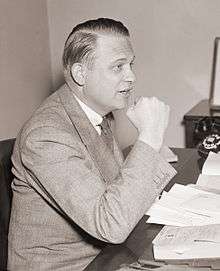
On May 26, 1938, the House Committee on Un-American Activities was established as a special investigating committee, reorganized from its previous incarnations as the Fish Committee and the McCormack-Dickstein Committee, to investigate alleged disloyalty and subversive activities on the part of private citizens, public employees, and those organizations suspected of having communist or fascist ties; however, it concentrated its efforts on communists.[12][13] It was chaired by Martin Dies Jr. (D-Tex.), and therefore known as the Dies Committee. Its records are held by the National Archives and Records Administration as records related to HUAC.
In 1938, Hallie Flanagan, the head of the Federal Theatre Project, was subpoenaed to appear before the committee to answer the charge the project was overrun with communists. Flanagan was called to testify for only a part of one day, while a clerk from the project was called in for two entire days. It was during this investigation that one of the committee members, Joe Starnes (D-Ala.), famously asked Flanagan whether the Elizabethan era playwright Christopher Marlowe was a member of the Communist Party, and mused "Mr. Euripides" preached class warfare.[14]
In 1939, the committee investigated people involved with pro-Nazi organizations such as Oscar C. Pfaus and George Van Horn Moseley.[15][16] Moseley testified before the committee for five hours about a "Jewish Communist conspiracy" to take control of the US government. Moseley was supported by Donald Shea of the American Gentile League, whose statement was deleted from the public record as the committee found it so objectionable.[17]
The committee also put together an argument for the internment of Japanese Americans known as the "Yellow Report".[18] Organized in response to rumors of Japanese Americans being coddled by the War Relocation Authority (WRA) and news that some former inmates would be allowed to leave camp and Nisei soldiers to return to the West Coast, the committee investigated charges of fifth column activity in the camps. A number of anti-WRA arguments were presented in subsequent hearings, but Director Dillon Myer debunked the more inflammatory claims.[19] The investigation was presented to the 77th Congress, and alleged that certain cultural traits – Japanese loyalty to the Emperor, the number of Japanese fishermen in the US, and the Buddhist faith – were evidence for Japanese espionage. With the exception of Rep. Herman Eberharter (D-Pa.), the members of the committee seemed to support internment, and its recommendations to expedite the impending segregation of "troublemakers", establish a system to investigate applicants for leave clearance, and step up Americanization and assimilation efforts largely coincided with WRA goals.[18][19]
In 1946, the committee considered opening investigations into the Ku Klux Klan, but decided against doing so, prompting white supremacist committee member John E. Rankin (D-Miss.) to remark, "After all, the KKK is an old American institution."[20] Instead of the Klan, HUAC concentrated on investigating the possibility that the American Communist Party had infiltrated the Works Progress Administration, including the Federal Theatre Project and the Federal Writers' Project. Twenty years later, in 1965–1966, however, the committee did conduct an investigation into Klan activities under chairman Edwin Willis (D-La.).[21]
Standing Committee (1945–1975)
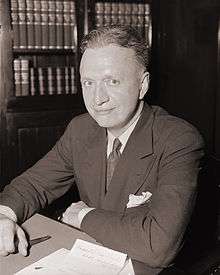
The House Committee on Un-American Activities became a standing (permanent) committee in 1945. Democratic Representative Edward J. Hart of New Jersey became the committee's first chairman.[22] Under the mandate of Public Law 601, passed by the 79th Congress, the committee of nine representatives investigated suspected threats of subversion or propaganda that attacked "the form of government as guaranteed by our Constitution".[23]
Under this mandate, the committee focused its investigations on real and suspected communists in positions of actual or supposed influence in the United States society. A significant step for HUAC was its investigation of the charges of espionage brought against Alger Hiss in 1948. This investigation ultimately resulted in Hiss's trial and conviction for perjury, and convinced many of the usefulness of congressional committees for uncovering communist subversion.[24]
Hollywood blacklist
In 1947, the committee held nine days of hearings into alleged communist propaganda and influence in the Hollywood motion picture industry. After conviction on contempt of Congress charges for refusal to answer some questions posed by committee members, "The Hollywood Ten" were blacklisted by the industry. Eventually, more than 300 artists – including directors, radio commentators, actors, and particularly screenwriters – were boycotted by the studios. Some, like Charlie Chaplin, Orson Welles, Alan Lomax, Paul Robeson, and Yip Harburg, left the U.S or went underground to find work. Others like Dalton Trumbo wrote under pseudonyms or the names of colleagues. Only about ten percent succeeded in rebuilding careers within the entertainment industry.
In 1947, studio executives told the committee that wartime films – such as Mission to Moscow, The North Star, and Song of Russia – could be considered pro-Soviet propaganda, but claimed that the films were valuable in the context of the Allied war effort, and that they were made (in the case of Mission to Moscow) at the request of White House officials. In response to the House investigations, most studios produced a number of anti-communist and anti-Soviet propaganda films such as The Red Menace (August 1949), The Red Danube (October 1949), The Woman on Pier 13 (October 1949), Guilty of Treason (May 1950, about the ordeal and trial of Cardinal József Mindszenty), I Was a Communist for the FBI (May 1951, Academy Award nominated for best documentary 1951, also serialized for radio), Red Planet Mars (May 1952), and John Wayne's Big Jim McLain (August 1952).[25] Universal-International Pictures was the only major studio that did not produce such a film.
Whittaker Chambers and Alger Hiss
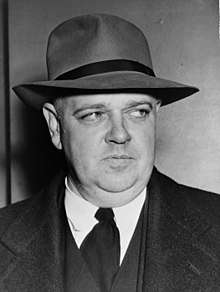
On July 31, 1948, the committee heard testimony from Elizabeth Bentley, an American who had been working as a Soviet agent in New York. Among those whom she named as communists was Harry Dexter White, a senior U.S. Treasury department official. The committee subpoenaed Whittaker Chambers on August 3, 1948. Chambers, too, was a former Soviet spy, by then a senior editor of Time magazine.
.jpg)
Chambers named more than a half-dozen government officials including White as well as Alger Hiss (and Hiss' brother Donald). Most of these former officials refused to answer committee questions, citing the Fifth Amendment. White denied the allegations, and died of a heart attack a few days later. Hiss also denied all charges; doubts about his testimony though, especially those expressed by freshman Congressman Richard Nixon, led to further investigation that strongly suggested Hiss had made a number of false statements. Hiss challenged Chambers to repeat his charges outside a Congressional committee, which Chambers did. Hiss sued for libel, leading Chambers to produce copies of State Department documents which he claimed Hiss had given him in 1938. Hiss denied this before a grand jury, was indicted for perjury, and subsequently convicted and imprisoned.[26][27] The present-day House of Representatives website on HUAC states, "In the 1990s, relying on Soviet archives and records from the Venona project – a secret U.S. program that decrypted Soviet intelligence messages – some scholars argued that Hiss had indeed been a spy on the Kremlin's payroll."[28]
Decline
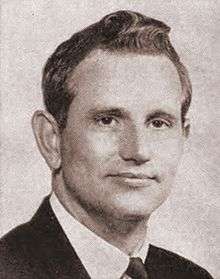
In the wake of the downfall of McCarthy (who never served in the House, nor on HUAC), the prestige of HUAC began a gradual decline in the late 1950s. By 1959, the committee was being denounced by former President Harry S. Truman as the "most un-American thing in the country today".[29]
In May 1960, the committee held hearings in San Francisco City Hall which led to the infamous riot on May 13, when city police officers fire-hosed protesting students from the UC Berkeley, Stanford, and other local colleges, and dragged them down the marble steps beneath the rotunda, leaving some seriously injured.[30][31] Soviet affairs expert William Mandel, who had been subpoenaed to testify, angrily denounced the committee and the police in a blistering statement which was aired repeatedly for years thereafter on Pacifica Radio station KPFA in Berkeley. An anti-communist propaganda film, Operation Abolition,[32][33][34][35] was produced by the committee from subpoenaed local news reports, and shown around the country during 1960 and 1961. In response, the Northern California ACLU produced a film called Operation Correction, which discussed falsehoods in the first film. Scenes from the hearings and protest were later featured in the Academy Award-nominated 1990 documentary Berkeley in the Sixties.
The committee lost considerable prestige as the 1960s progressed, increasingly becoming the target of political satirists and the defiance of a new generation of political activists. HUAC subpoenaed Jerry Rubin and Abbie Hoffman of the Yippies in 1967, and again in the aftermath of the 1968 Democratic National Convention. The Yippies used the media attention to make a mockery of the proceedings. Rubin came to one session dressed as a Revolutionary War soldier and passed out copies of the United States Declaration of Independence to those in attendance. Rubin then "blew giant gum bubbles, while his co-witnesses taunted the committee with Nazi salutes".[36] Rubin attended another session dressed as Santa Claus. On another occasion, police stopped Hoffman at the building entrance and arrested him for wearing the United States flag. Hoffman quipped to the press, "I regret that I have but one shirt to give for my country", paraphrasing the last words of revolutionary patriot Nathan Hale; Rubin, who was wearing a matching Viet Cong flag, shouted that the police were communists for not arresting him as well.[37]
Hearings in August 1966 called to investigate anti-Vietnam War activities were disrupted by hundreds of protesters, many from the Progressive Labor Party. The committee faced witnesses who were openly defiant.[38][39]
According to The Harvard Crimson:
In the fifties, the most effective sanction was terror. Almost any publicity from HUAC meant the 'blacklist'. Without a chance to clear his name, a witness would suddenly find himself without friends and without a job. But it is not easy to see how in 1969, a HUAC blacklist could terrorize an SDS activist. Witnesses like Jerry Rubin have openly boasted of their contempt for American institutions. A subpoena from HUAC would be unlikely to scandalize Abbie Hoffman or his friends.[40]
In an attempt to reinvent itself, the committee was renamed as the Internal Security Committee in 1969.[41]
Chairmen
Source:[43]
- Martin Dies Jr., (D-Tex.), 1938–1944
- Edward J. Hart (D-N.J.), 1945–1946
- J. Parnell Thomas (R-N.J.), 1947–1948
- John Stephens Wood (D-Ga.), 1949–1953
- Harold H. Velde (R-Ill.), 1953–1955
- Francis E. Walter (D-Pa.), 1955–1963
- Edwin E. Willis (D-La.), 1963–1969
- Richard Howard Ichord Jr. (D-Mo.), 1969–1975
Notable members
See also
- California Senate Factfinding Subcommittee on Un-American Activities
- Defending Dissent Foundation
- J. Edgar Hoover
- Loyalty oath
- Manning Johnson
- McCarran Internal Security Act
- Edward S. Montgomery
- Mundt–Ferguson Communist Registration Bill
- Mundt–Nixon Bill
- Red-baiting
- Subversive Activities Control Board
- Wilkinson v. United States
References
- Frum, David (2000). How We Got Here: The '70s. New York: Basic Books. p. 265. ISBN 978-0-465-04195-4.
- For example, see Brown, Sarah (February 5, 2002). "Pleading the Fifth". BBC News.
McCarthy's House Un-American Activities Committee
- Patrick Doherty, Thomas. Cold War, Cool Medium: Television, McCarthyism, and American Culture. 2003, pp. 15–16.
- Schmidt, p. 136
- Schmidt, p. 144
- "Complete Digitized Testimonies: The U.S. Congress Special Committee on Communist Activities in Washington State Hearings (1930)". Communism in Washington State History and Memory Project. Retrieved August 21, 2012.
- Memoirs, pp. 41–42
- To Added Law for Curb on Reds The New York Times, November 18, 1930 p. 21
- Berlet, Chip; Lyons, Matthew Nemiroff (2000). Right-Wing Populism in America: Too Close for Comfort. Guilford Press. ISBN 978-1-57230-562-5.
- "Credulity Unlimited". New York Times. November 22, 1934. Retrieved March 3, 2009.
- Weinstein, Allen; Vassiliev, Alexander (March 14, 2000). The Haunted Wood: Soviet Espionage in America – The Stalin Era. New York: Modern Library. pp. 140–150. ISBN 978-0-375-75536-1.
- Finkelman, Paul (October 10, 2006). Encyclopedia of American Civil Liberties. CRC Press. p. 780. ISBN 978-0-415-94342-0. Retrieved May 25, 2011.
- "House Un-American Activities Committee". Eleanor Roosevelt National Historic Site. National Park Service. Archived from the original on May 29, 2010. Retrieved May 25, 2011.
- Nightingale, Benedict (September 18, 1988). "Mr. Euripides Goes To Washington". The New York Times. Retrieved May 4, 2010.
- "Saturday, October 21, 1939" in Investigation of Un-American Propaganda Activities in the United States: Hearings Before a Special Committee on Un-American Activities, House of Representatives, Seventy-fifth Congress, Third Session-Seventy-eighth Congress, Second Session, on H. Res. 282, &c. Washington: U.S. Government Printing Office. 1939. p. 6204.
- "Moseley, George Van Horn (1874-1960)" in Richard S. Levy (Ed.) (2005). Antisemitism: A Historical Encyclopedia of Prejudice and Persecution Vol. 1 A-K. Santa Barbara: ABC-CLIO. p. 471. ISBN 978-1-85109-439-4.CS1 maint: extra text: authors list (link)
- New York Times: "The News of the Week in Review," June 4, 1939, accessed April 4, 2011
- Myer, Dillon S. Uprooted Americans. Tucson: University of Arizona Press, 1971. p. 19.
- Niiya, Brian. "Dies Committee". Densho Encyclopedia. Retrieved August 21, 2014.
- Newton, Michael. The Ku Klux Klan in Mississippi A History. Jefferson, N.C.: McFarland & Co, 2010, p. 102.
- Newton, p. 162.
- Walter Goodman, The Committee, New York: Farrar, Straus and Giroux, 1968
- "University of Kentucky archive" (PDF).
- Doug Linder, The Alger Hiss Trials – 1949–50 Archived August 30, 2006, at the Wayback Machine, 2003.
- Dan Georgakas, "Hollywood Blacklist", in: Encyclopedia Of The American Left, 1992.
- Chambers, Whittaker (1952). Witness. Random House. ISBN 978-0-89526-571-5.
- Weinstein, Allen (2013). Perjury. Hoover Institution Press. ISBN 978-0-8179-1225-3.
- "Office of the Clerk of the U.S. House of Representatives". Archived from the original on September 16, 2012. Retrieved July 15, 2012.
- Stephen J. Whitfield. The Culture of the Cold War. The Johns Hopkins University Press, 1996
- "The Sixties: House Un-American Activities Committee" at PBS.org
- Carl Nolte (May 13, 2010). "'Black Friday', birth of U.S. protest movement". San Francisco Chronicle.
- "Operation Abolition", 1960 on YouTube
- "Operation Abolition", Time magazine, 1961.
- Operation Abolition (1960) on YouTube
- "Operation Abolition", video.google.com and Time magazine, Friday, March 17, 1961.
- Youth International Party, 1992.
- Jerry Rubin, A Yippie Manifesto Archived July 16, 2011, at the Wayback Machine.
- John Herbers (August 17, 1966). "War Foes Clash With House Panel in Stormy Session After Judges Lift Hearing Ban". The New York Times. Retrieved December 11, 2016.
- Jim Dann and Hari Dillon. "The Five Retreats: A History of the Failure of the Progressive Labor Party CHAPTER 1: PLP AT ITS PRIME 1963–1966". Marxists.org. Marxists.org. Retrieved December 11, 2016.
PLP brought 800 people for 3 days of the sharpest struggle that Capital Hill had seen in 30 years. PL members shocked the inquisitors when they openly proclaimed their communist beliefs and then went on into long sharp detailed explanations, which didn't spare the HUAC Congressmen being called every name in the book.
- The Harvard Crimson: Thomas Geogheghan, "By Any Other Name. Brass Tacks", February 24, 1969, accessed May 25, 2018
- Staples 2006, p. 284.
- Charles E. Schamel, Records of the US House of Representatives, Record Group 233: Records of the House Un-American Activities Committee, 1945–1969 (Renamed the) House Internal Security Committee, 1969–1976. Washington, DC: Center for Legislative Archives, National Archives and Records, July 1995; p. 4.
- Eric Bentley, Thirty Years of Treason: Excerpts from Hearings Before the House Committee on Un-American Activities, 1938–1968. New York: The Viking Press 1971; pp. 955–957.
Works cited
- Staples, William G. (2006). Encyclopedia of Privacy. Greenwood Press. ISBN 978-0-313-08670-0.CS1 maint: ref=harv (link)
Further reading
- Works by or about House Un-American Activities Committee in libraries (WorldCat catalog)
Archives
- Investigation of un-American propaganda activities in the United States. Hearings before a Special Committee on Un-American Activities, House of Representatives (1938–1944), Volumes 1–17 with Appendices. University of Pennsylvania online gateway to Internet Archive and Hathi Trust.
- United States House Committee on Internal Security University of Pennsylvania online gateway to Internet Archive and Hathi Trust.
- Schamel, Gharles E. Inventory of records of the Special Committee on Un-American activities, 1938–1944 (the Dies committee). Center for Legislative Archives, National Archives and Records Administration. Washington, D.C., July 1995.
- Schamel, Gharles E. Records of the House Un-American Activities committee, 1945–1969, renamed the House Internal Security committee, 1969–1976. Center for Legislative Archives, National Archives and Records Administration. Washington, D.C., July 1995.
- Ship, Reuben (2000). "From the Archives: The Investigator (1954): A Radio Play by Reuben Ship". The Journal for MultiMedia History. 3.
Books
- Bentley, Eric, ed. (2002) [1971, Viking Press]. Thirty Years of Treason: Excerpts from Hearings Before the House Committee on Un-American Activities, 1938–1968. Nation Books. ISBN 978-1-56025-368-6.
- Buckley, William F. (1962). The Committee and Its Critics; a Calm Review of the House Committee on Un-American Activities. Putnam Books.
- Caballero, Raymond. McCarthyism vs. Clinton Jencks. Norman: University of Oklahoma Press, 2019.
- Chambers, Whittaker (1952). Witness. Random House. ISBN 978-0-89526-571-5.
- Donner, Frank J. (1967). The Un-Americans. Ballantine Books.
- Gladchuk, John Joseph (2006). Hollywood and Anticommunism: HUAC and the Evolution of the Red Menace, 1935–1950. Routledge. ISBN 978-0-415-95568-3.
- Goodman, Walter (1968). The Committee: The Extraordinary Career of the House Committee on Un-American Activities. Farrar Straus & Giroux. ISBN 978-0-374-12688-9.
- Newton, Michael (2010). The Ku Klux Klan in Mississippi: a history. McFarland. ISBN 978-0-7864-4653-7.
- O'Reilly, Kenneth (1983). Hoover and the Unamericans: The FBI, HUAC, and the Red Menace. Temple University Press. ISBN 978-0-87722-301-6.
- Schmidt, Regin (2000). Red Scare: FBI and the Origins of Anticommunism in the United States, 1919–1943. Museum Tusculanum Press. ISBN 9788772895819.
- U.S. 86th Congress – House Committee on Un-American Activities (December 1959), Facts on Communism – Volume I, The Communist Ideology, House Document No. 336, p. 166, OCLC 630998985, retrieved October 6, 2013→75 Stat. 965
- U.S. 87th Congress – House Committee on Un-American Activities (December 1960), Facts on Communism – Volume II, The Soviet Union, from Lenin to Khrushchev, House Document No. 139, p. 408, OCLC 80262328, retrieved October 6, 2013→75 Stat. 961
Articles
- Bogart, Humphrey (March 1948). "I am no communist". Photoplay. Retrieved August 28, 2013.
- "Operation Abolition", Time magazine, March 17, 1961
- Seidel, Robert W. (2001). "The National Laboratories and the Atomic Energy Commission in the Early Cold War". Historical Studies in the Physical and Biological Sciences. 32 (1): 145–162. doi:10.1525/hsps.2001.32.1.145. JSTOR 3739864.
External links
| Wikimedia Commons has media related to House Un-American Activities Committee. |
- Works by House Un-American Activities Committee at Project Gutenberg
- History.House.gov HUAC – permanent standing House Committee on Un-American Activities
- History.House.gov HUAC – 1948 Alger Hiss-Whittaker Chambers hearing before HUAC
- Eastern Carolina University Libraries: The Cold War and Internal Security Collection (CWIS): HUAC
- Un-American Activities Committee The Spartacus Educational website, UK
- House Unamerican Activities Committee (HUAC) Collection: Pamphlets collected by HUAC, many of which the committee deemed "un-American". (4,000 pamphlets). From the Rare Book and Special Collections Division at the Library of Congress